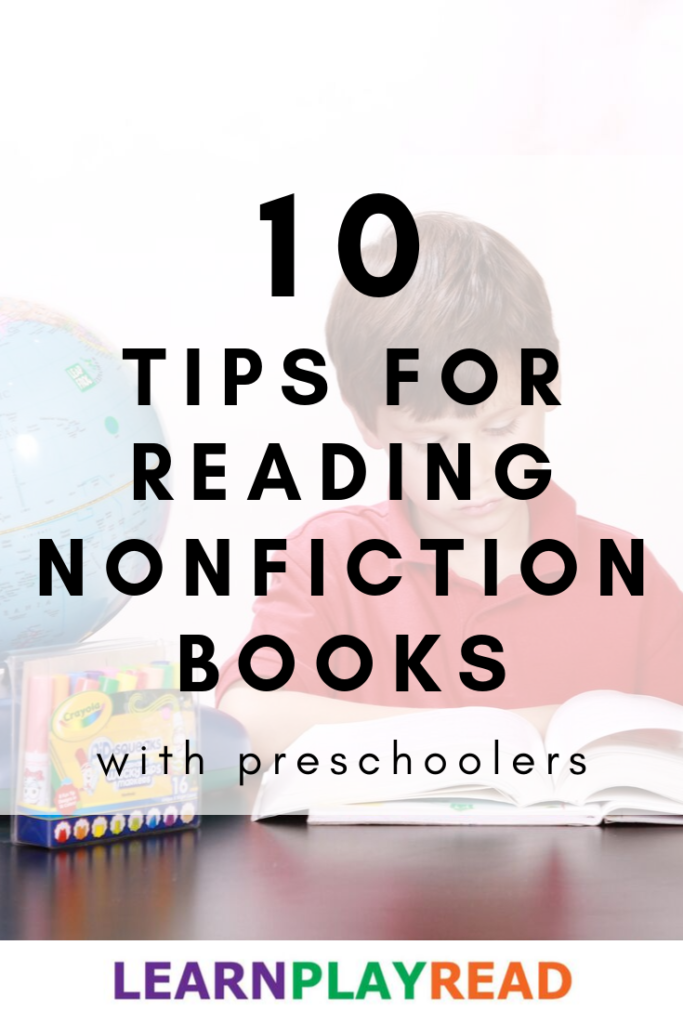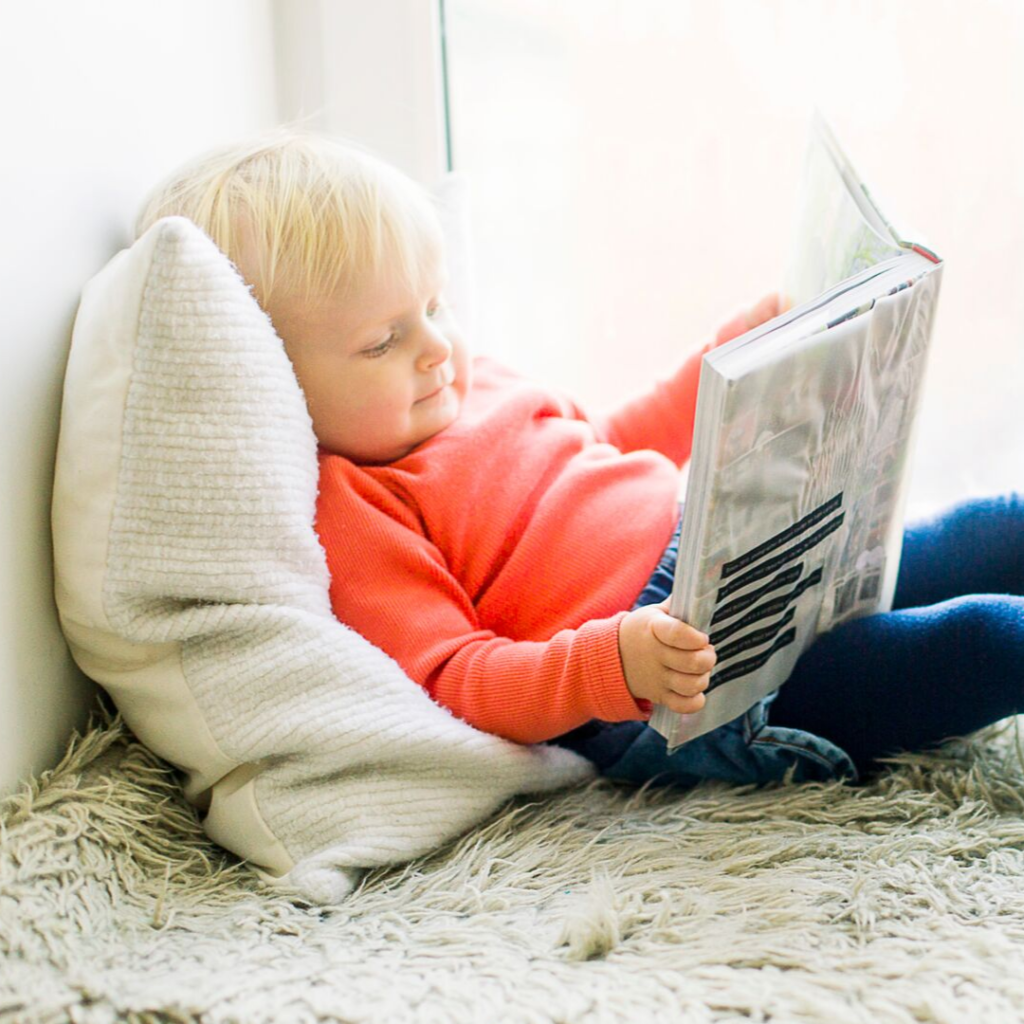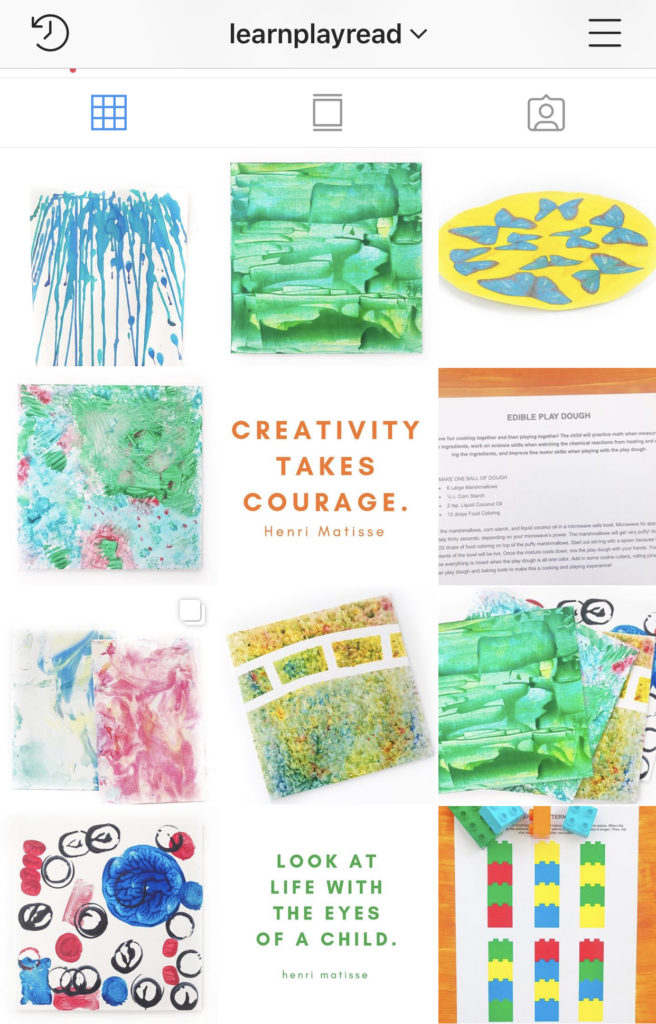It can be tricky to incorporate nonfiction books into everyday reading with preschoolers, but here are a few tips for getting started.
*We use affiliate links and may earn commission from purchases made through those links. All opinions are our own.

Read the Pictures
If the text isn’t holding the child’s attention, discuss the pictures. Answer the child’s questions and listen to their observations.
Read Differently
Nonfiction doesn’t always have to be read from front to back. Look for interesting headings to dive into with the child, and show him/her the table of contents and find a fun place to start.
Interact Together
Ask trivia questions or play “spot and find” with the picture and illustrations/photographs.
Try New Books
There are so many different kinds of nonfiction books – not just those stereotypical textbook style books. There are cook books, or art books, or science experiment books. Read about important people or learn about animals. Or try narrative nonfiction – it reads like a fiction story. Here are 20 amazing nonfiction books for preschoolers.
Practice Early Literacy Skills
Reading a broad variety of nonfiction books will create a foundation for a love of learning in the child. He/she will also be introduced to new words and ideas when you read nonfiction with him/her.
Make it a Field Trip
Before going to a museum, zoo, or on a trip, read about the upcoming topics of information. The child will feel even more excited to see a bear when he/she already knows about them. (Try Truth About Bears by Maxwell Eaton.)

Read Interesting Books
There are so many nonfiction options, so if the child isn’t interested in one, try another! Cater to their interests to get started and then try learning about something new!
Learn in the Real World
Incorporate the learning in the real world. See those flowers blooming? Talk about how plants use color to communicate (Flower Talk by Sara Levine). Is the child interested in fire trucks? Read multiple books about fighting fires. Incorporate the child’s love of princesses with a how-to book on princess hairstyles (Disney Princess Hairstyles by Theodora Mjoll Skuladotti).


Look Inside
When picking nonfiction books, look inside. Make sure the pictures and/or illustrations are aplenty and appealing. Skim the text – will the child be able to follow? It’s okay to try books that are a little bit advanced, but make sure the child will be able to learn and follow instead of getting bored or frustrated.
Bonus Tip: Here are 20 amazing nonfiction books to start with!

Looking for more great book ideas for your preschooler? Check these out!
Follow us on Instagram for more art history crafts, book suggestions, and process art activities!
